Thrill Rides
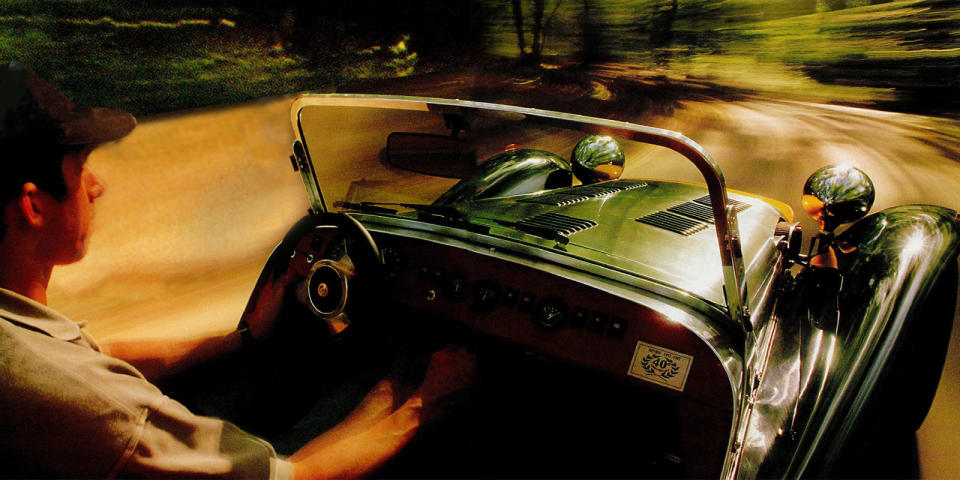
Remember the roller coaster that scared you as a kid? Measured by a stopwatch, you probably drive faster to everyday. But according to another ticker, that one pounding in your chest, it was an unforgettable thrill. Climb with us into five cars that will your pulse all over again.
"Nothing in life is so exhilarating as to be shot as without result," Winston Churchill once said. Granted, many of us would happily avoid putting this hypothesis to the test, but the truth is, somewhere in the human psyche there exists a desire for danger, a need to experience something so thrilling that it actually threatens our well-being. Whether it comes in the form of jumping out of airplanes, riding rollercoasters, or simply watching gory horror movies, we all have it to some degree.
Our way of fulfilling that need is with cars. In this case, they include the Lamborghini Diablo Roadster VT, the Dodge Viper RT/10 and the Porsche Turbo S for pure unadulterated speed; the Caterham Super Seven for maximum cornering prowess; and the Lotus Elise, which provides equal doses of both.
Why these cars? It's for the incredible things they are capable of doing on the road–but, paradoxically, it's also for the things they don't do. They don't coddle, pamper, or isolate. This group has a blunt rawness that puts them into stark relief against the mass of civilized cars. In contrast, modern engineering has filtered away many thrills; it's common today to find you're traveling faster than you think you are. The cars collected here are not necessarily supreme examples of engineering. They are thrills.
So, join us for a wild ride in what we feel are the most exciting cars in the world and discover, as we did, that when sitting behind their respective wheels, you won't necessarily be driving them–they'll be driving you.
Lamborghini Diablo Roadster VT
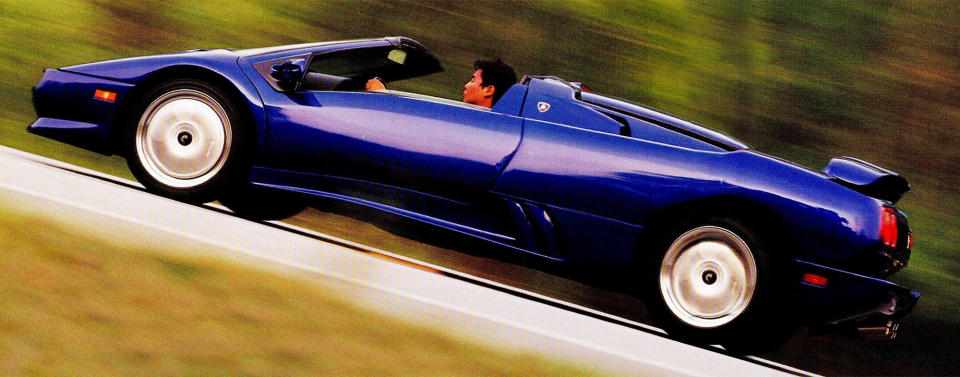
Breathe deep before swinging up the Lamborghini Diablo Roadster VT's doors and climbing in... it may be the last normal breath you'll take before the ride is over. After dropping into the snug leather seat, your impression of this car from the driver's position may not be as intimidating as you first imagined: The opulent look of the dash, the user-friendly controls and the near flawless fit and finish (no faux carbon-fiber panels!) all indicate upscale luxury.
But then, looks are often deceiving.
On a sunny spring day at an old air field near Jacksonville, Florida, I found myself in the Diablo's driver's seat wondering nervously if I could indeed handle 492 horsepower and 428 lb.-ft. of torque at their limits, and if so, whether there was enough room at the end of the landing strip to slow the car down. "It also gets bumpy at the end there, so watch out," warned Road Test Editor Kim Reynolds, who tested the Vector M12 here about a year ago.
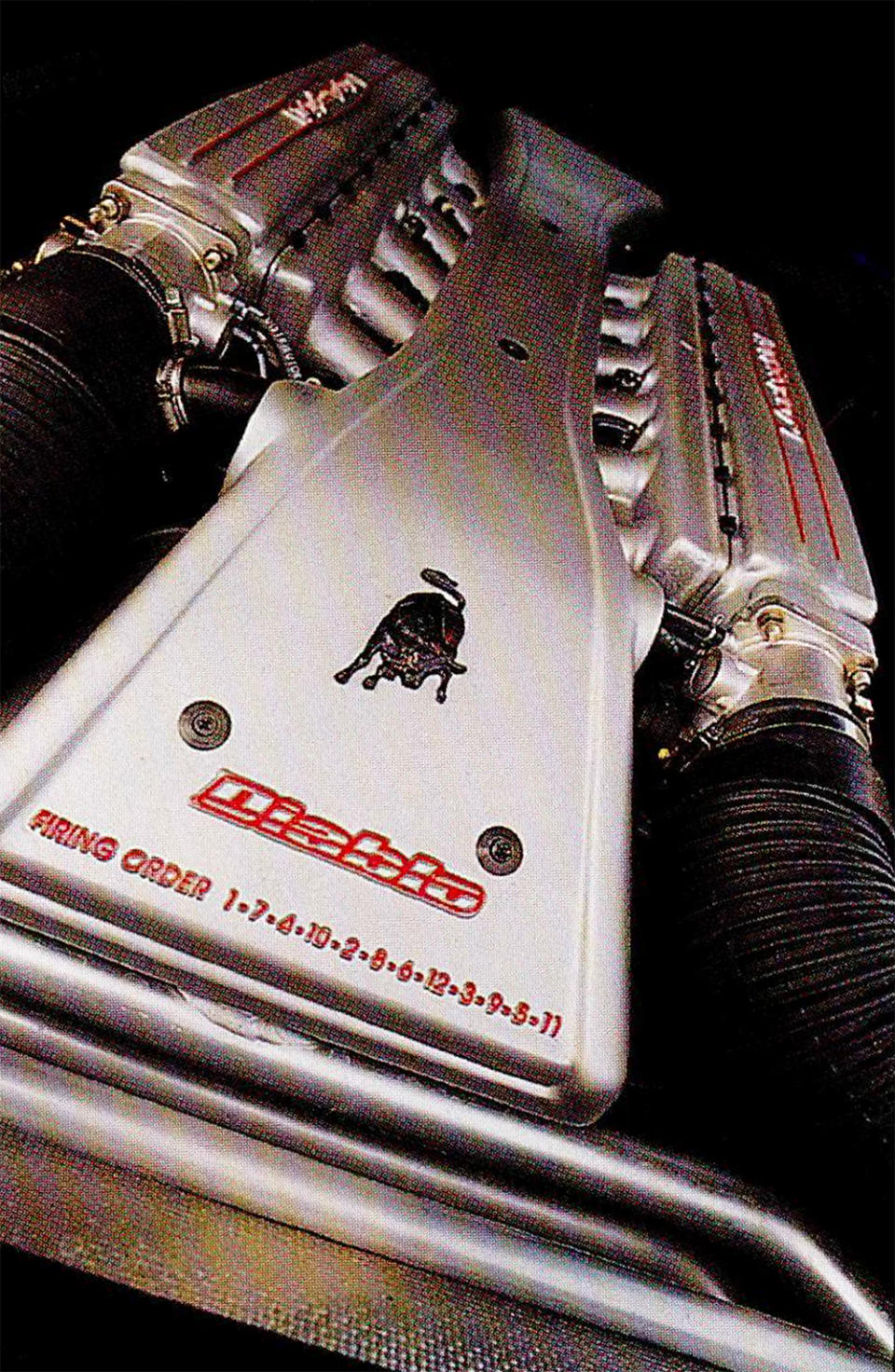
I turned the ignition key, and immediately the 5.7-liter V12 sitting behind my right shoulder roared like a Siberian tiger. . . one that smelled fear. ("Is this smart?" I wondered.)
I threw the shifter into 1st gear-to the left and down in the metal shift gate-spun the revs to about 6,000 rpm and dropped the clutch. All four tires took hold of the tarmac, but because the Pirelli P Zeros were so sticky, the engine bogged slightly from lack of wheelspin. A split-second later, though, I was screaming "Whoo-whee!" at the top of my lungs as my entire torso was pinned hard into the seat. From behind, the V12 howled with a sound only an Italian engine can make. But I found that the Lambo V12's pitch sounded lower and deeper than that of a Ferrari. Where a Ferrari's engine sings with the sweet melodic grace of Luciano Pavarotti, the Lamborghini V12 is more like Placido Domingo, belting out each note with passionate force.
What impressed me most was the Diablo Roadster's surge from 20 mph to 80, which at 7.0 seconds is faster than most cars in the world. I reached 60 mph in 5.1 sec. The century mark came and went in 11.7sec. "Ya-hooo!" Traveling at more than 130 mph, I saw the dirt patch that marked the end of the strip rushing at me, and the car was beginning to lose stability as it drove over the landing strip's harsh bumps. . ."Hellllp!"
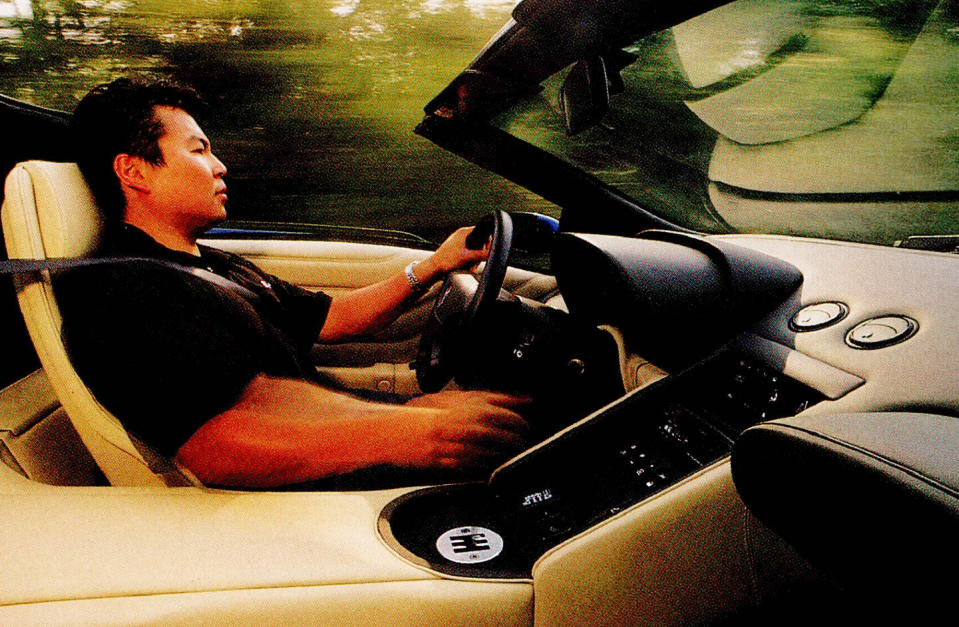
Fortunately, the vented disc brakes-12.8 in. front and 12.4 in.rear-were more than capable of bringing the 3580-lb. beast to a halt. And next year, they'll get even better when all Diablo Roadsters will have ABS as standard equipment. Lamborghini claims that the Diablo Roadster VT tops out at 200 mph-which by the way, is about twice as fast as the world's fastest roller coaster-and sources say that the car will have even more power next year.
Although straight-line performance is the Diablo Roadster VT's forte, the car's handling is equally impressive. Turn-in is crisp and body roll slight through most corners, although a modest degree of understeer is felt through low-speed turns.
On the highways in and around Jacksonville, the Roadster VT delivered a smooth ride, with its suspension system-upper and lower A-arms, front and rear-absorbing minor road irregularities like a sponge. (Now I know how Peter Egan and his wife managed to drive one of these cross country.) The front suspension features a self-leveling system that lifts the front end about an inch, helpful when going over speed bumps or entering driveways.
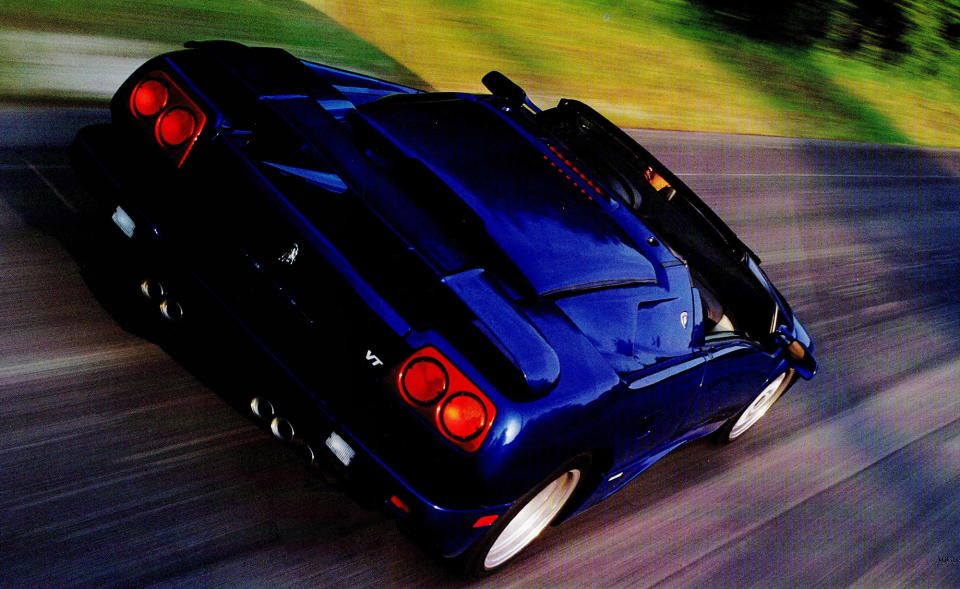
So how much does a ticket to ride in the Diablo Roadster cost? A reality-biting $275,000. But according to Lamborghini National Sales Manager James Stock, he can't get enough of them. All 50 Diablo VTs slated for this year are spoken for, and he says he hopes to bring more in next year. There's also a one-make race series in the works, where for about $330,000 you can race a 540-bhp Diablo Roadster R (transportation of the car and various car parts including tires are included), and then keep the Lamborghini after the season is over.
It's evident that the crest of the bull, once thought to be on its last leg, is still healthy and charging. The Diablo Roadster VT is a remarkable automobile, one of the last remaining pure exotics that have survived numerous owners and the hardships of a declining market. It's also one helluva ride. The last line of Lamborghini's press release says it best: "Forza Italia. Forza Lamborghini."-Sam Mitani
Porsche 911 Turbo S
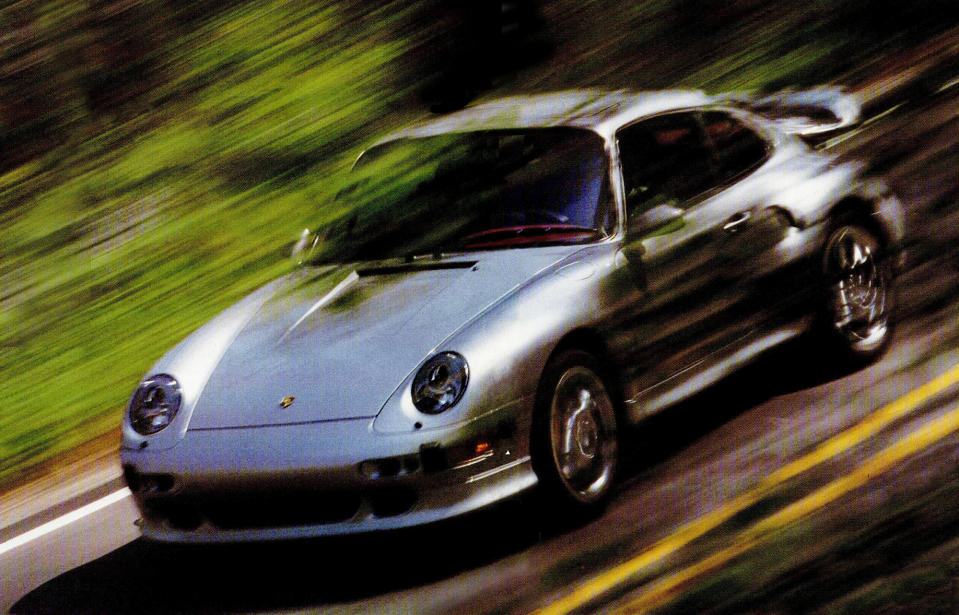
Squeeze the lever on the door handle and delight in the sound of the mechanical latch. Click. Plant your hindquarters in the low-riding leather bucket seat and swing your legs inside. The floor-mounted clutch and brake pedals feel odd when you first engage them, so press them a few times to get the feel. Comfortable? Then insert the key into the chrome slot on the left side of the steering wheel, on an instrument panel that's flat from door to door-an anti-cockpit look that dates back to 1964. Twist it, and with startling abruptness, the cabin fills with a bellow of exhaust roar that gradually subsides into a raspy idle blended with fan whirrings.
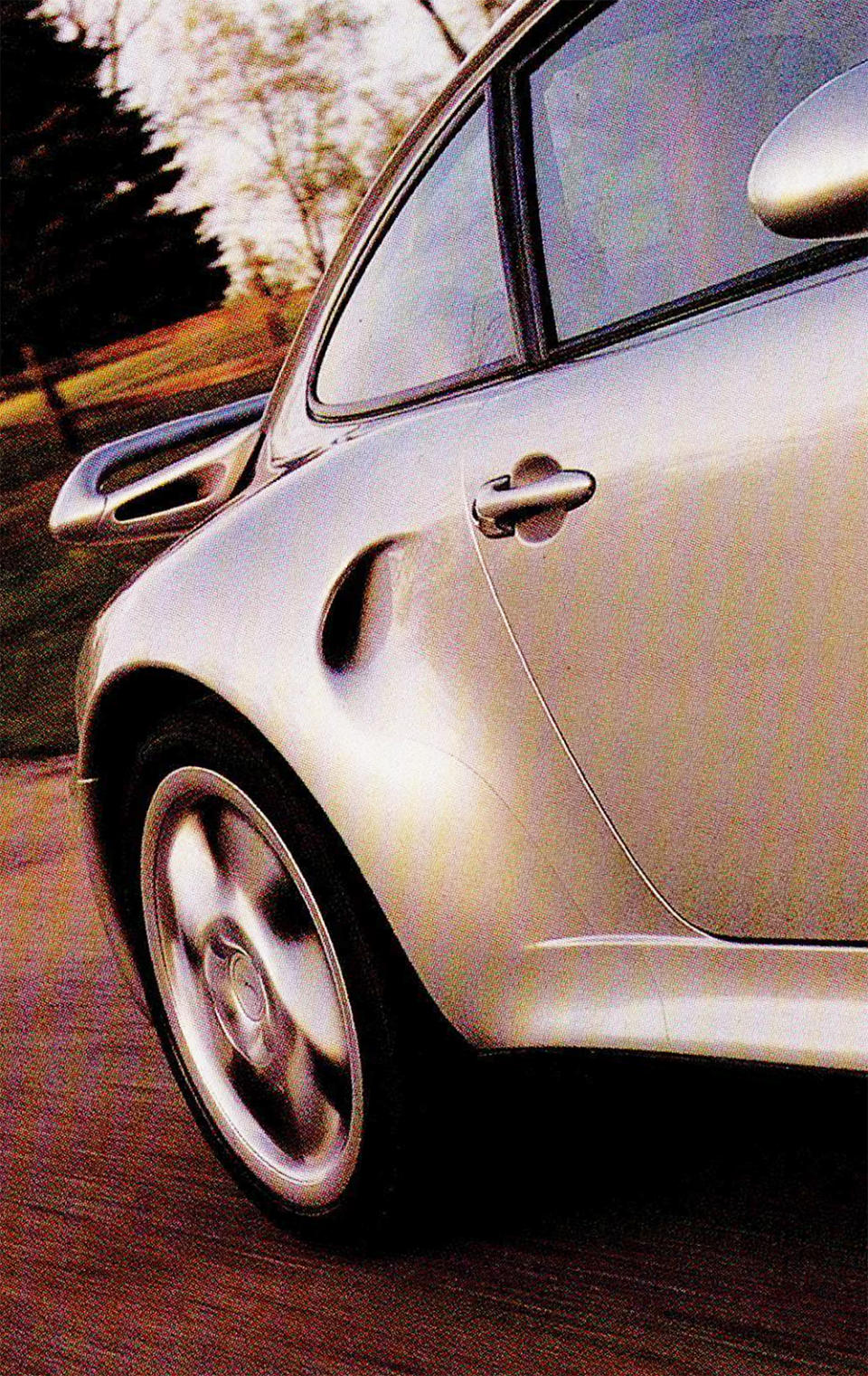
The 1997 Porsche 911 Turbo S Coupe, at $154,991 as tested including a $2,600 gas-guzzler tax, is the latest forced-induction model in the Turbo's 22-year history. Built from the current, all-wheel-drive Turbo, it has as its heart and soul a 424-bhp version of the 3.6-liter, twin-turbocharged, air-cooled flat-6-the highest power output from a production Porsche engine ever sold in North America. That's 24 bhp more then the standard Turbo, though the only external evidence is in its additional air inlets, left and right of the parking lights, and aft in the leading edges of the widely flared panels.
The engine's warm now. Ahead of Porsche sloping silver nose stretches about a half-mile of cold Milan (Michigan) drag strip. I take in a slight breath and hold it as I depress the throttle, bringing the revs up to about 3,000 rpm. Out goes the clutch, and instantly all four wheels start hopping up and down madly as the interior reverberates with the thumps of driveline tramp, which sound as if the car is saying "Stupid! Stupid! Stupid!" My breath finally exits in a brief chuckle. Guess I better try it again.
Fortunately, using about 2,000 rpm produces better results. Mild wheelspin and then, boom! The guardrails blur in my peripheral vision as the tachometer needle approaches 6,750 rpm. Grab 2nd gear. There's the sound of whirring of chains, the whish-hiss of intake air, and the roar of exhaust gases and all manner of other mechanical things happening, very quickly indeed.
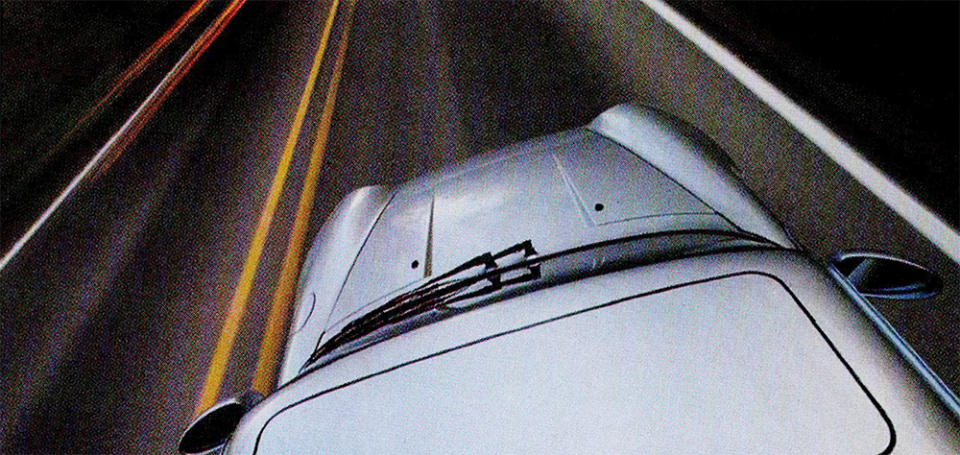
There's no doubt in my mind that the Turbo S's 424 bhp is an accurate number. The acceleration of the 911 Turbo S is something to be reckoned with-in any one of its six gears. Even without a downshift, the car can dart ahead in rush-hour traffic, keeping those road-hogging brute-ute vehicles in the rearview mirror, a sort of high-resolution video. And when a winding road finally beckons, a 6-to-4 downshift brings thrills of unbridled short-chute acceleration and near-neutral handling. To 60 mph, the Turbo S needs only 3.8 seconds. And we all know how well the AWD turbo handles. (We recorded 0.92g on the skidpad in the "normal" Turbo.)
However, what impresses me most about this coupe is its refinement. This is a tractable sports car in traffic, with light steering and easy clutch and brake pedal efforts. The engine's electronic management system smooths the turbo's boost so that there are no sudden lurches to upset the tires' grip.
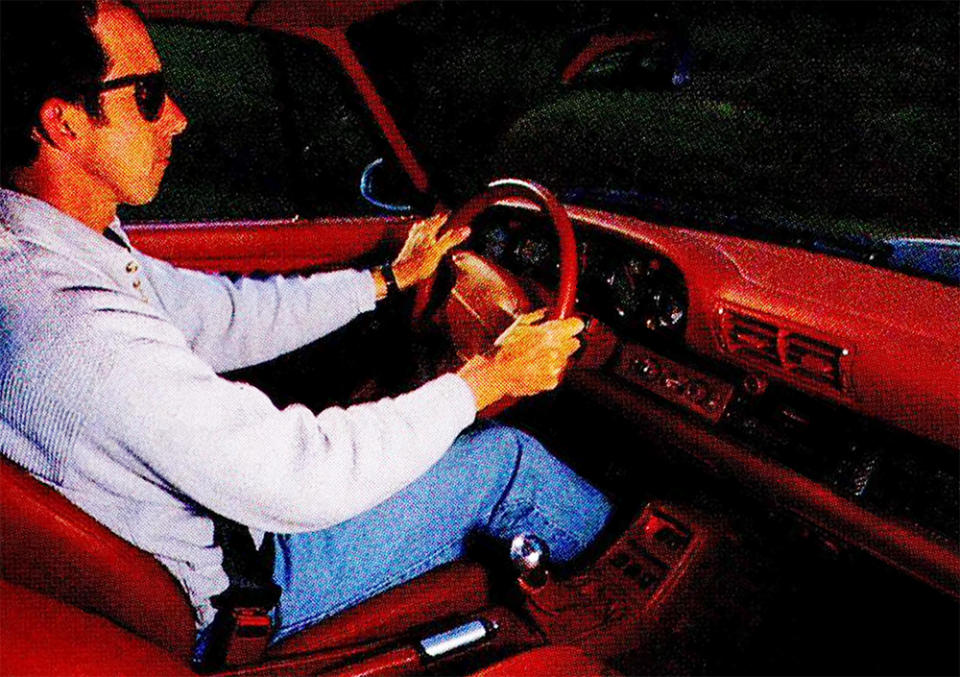
And the ride, given the high-performance tires, really doesn't beat you up even on cratered Michigan roads at the beginning of pothole season.
Simply put, the 911 Turbo S won't bite you as long as your throttle, clutch and turn-in techniques aren't beastly. You might bite yourself, though, in a fit of frenzy by operating what is as thrilling a mechanical tornado as is legally available at any price.- Ken Zino
Lotus Elise
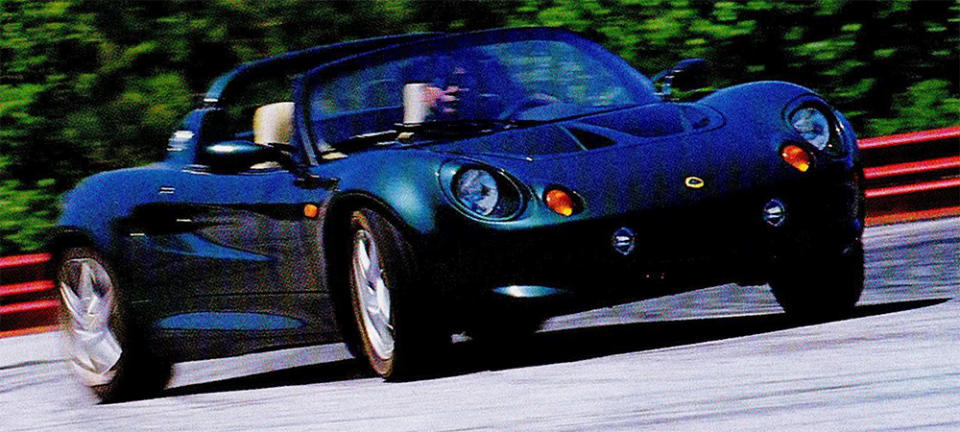
In Webster's Third New International World Dictionary, the term "sports car" is defined thus: "a low-slung open or convertible automobile designed for high-speed roads and having rapid acceleration. . . and usually [having] seats for two people." This describes the Lotus Elise to the letter.
To many of you, the Elise needs no introduction. It has been blowing the toupees off roadster lovers in Europe for the past year, and virtually every periodical on the Continent has given it its stamp of approval, using words like "Outstanding," "Fantastique" and "Wunderbar!" Well, the time may soon come when we'll need to conjure up our own adjective or two because, according to Lotus, the stylish and compact 2-seater may be here in the not-too-distant future, albeit in limited quantity.
At R&T, news like this prompts a plane trip-in this particular case, to see our old friend Arnie Johnson, vice president of parts and service for Lotus Cars U.S.A. So, the day after driving the Lamborghini Diablo Roadster VT in Florida, I headed for Atlanta, Georgia, with test gear in hand and a high level of (adolescent?) anxiety.
"My expectations are pretty high," I warned Arnie as we walked around the Elise. "I haven't heard one bad thing about this car."
"Don't worry; you won't be disappointed," he said.
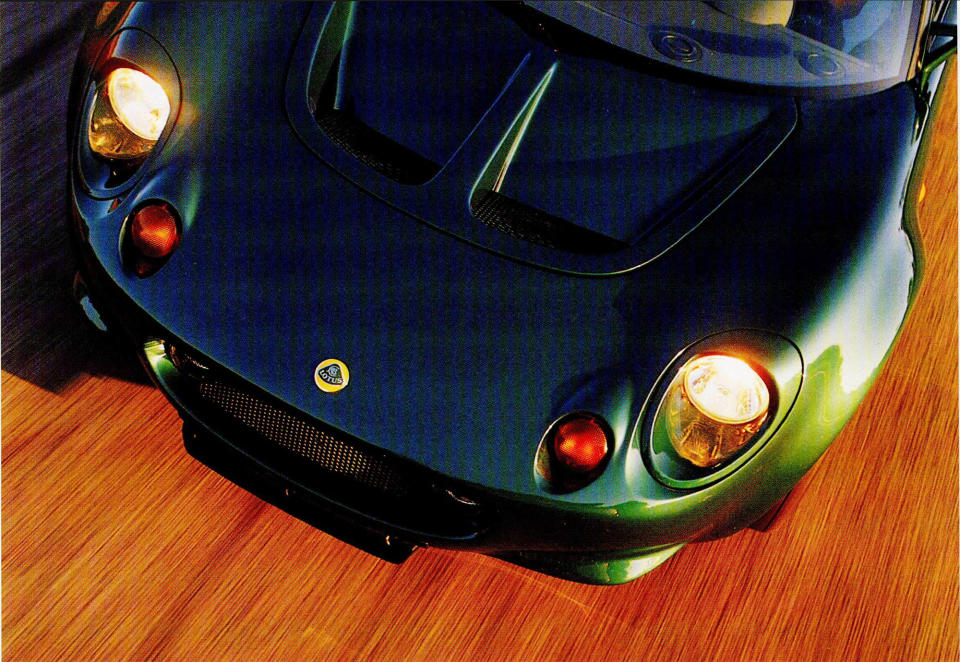
Climbing into the Elise takes some dexterity. The floorboard is so low that once you're in, the bottom doorsill acts as an armrest. And the steering wheel, which is non-adjustable, protrudes immediately above the driver's seat.
"Minimalist" best describes the Elise's cabin. The seats are simple buckets wrapped in leather, and the dashboard is about as straightforward as you'll find. The instrument cluster consists of a speedometer and tach, and there's a small liquid-crystal display for the odometer, fuel level, oil pressure and engine oil temperature.
Turn on the ignition and the 1.8-liter inline-4 mounted amidships comes idly to life, sounding no different from any other 4-banger.
Place the shifter into 1st and let out the clutch.
"Whooaaaa!"
The car jumps off the line with the tenacity of a world-class exotic… keep the throttle floored, and the car just keeps going. Each upshift is met with a chirp of the Pirelli P Zero tires, and before 17 sec. elapse, the speedometer registers 160 km/h. The test numbers reveal that the Elise is indeed world-class. It reached 60 mph in 5.6 sec. and the quarter mile in 14.4.
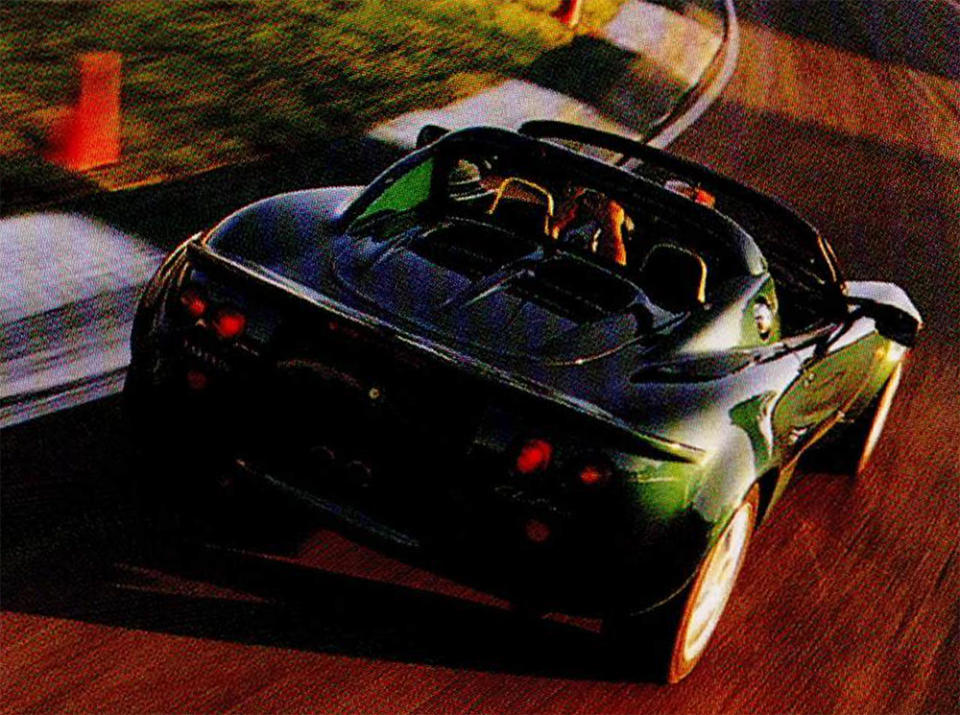
So, how do 118 horses produce such impressive performance? The answer: low weight. The Elise weighs in at a remarkably lean 1520 lb., thanks in part to an aluminum space frame that features special bonding techniques and a lightweight composite body. This low curb weight also enables the Elise to be one of the most agile cars in the world.
The slightest steering input elicits an immediate directional response. Turn-in is crisp and body roll is all but absent. The Lotus understeers slightly through most corners, but bringing it into a drift presents no problem. With 65 percent of the car's weight over its tail, lifting off the throttle pedal in mid-turn will bring the back end out, albeit in a controlled manner. In fact, the engine is so responsive that you can can complete a turn by throttle modulation alone.
In Britain, the Elise sells for approximately $30,000, a reasonable amount indeed when you consider that it undercuts the Porsche Boxster, Mercedes-Benz SLK230 and BMW Z3 2.2 by about $10,000 and beats them to 60 mph by about a second. But price is not the issue here, the car is the issue. The Lotus Elise is the most enjoyable car I have ever driven and one that every enthusiast must drive. Keep your fingers crossed.-Sam Mitani
Dodge Viper RT/10 Roadster
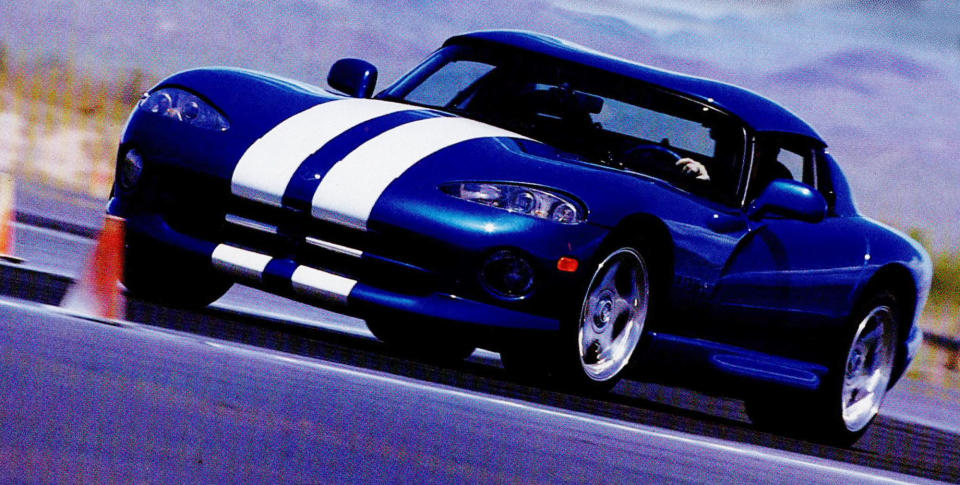
Great news: Dodge's 1997 Viper Roadster now packs the potent V10 of the GTS Coupe beneath its long hood. That, though, isn't the real power of the car. The real power is this: Anytime I've had a Viper in my driveway, it has drawn people to my house like bees to honey. Neighbors I've never met, complete strangers, wanting the big guy to give 'em a thrill ride.
Indeed, no other car draws people like the Viper, and judging from their grins, the car has yet to disappoint. Sorry, guys, those short rides pale in comparison to the thrill of my last laborious assign- picking up a brand-new Viper Roadster on a glorious spring day in San Francisco, then driving it across the Golden Gate Bridge and heading up to Sears Point International Raceway where I'd drive the Viper like it's meant to be driven. Hey, somebody's gotta do it. . .
On the drive up I noted the changes to this second-generation Roadster. In addition to the more powerful V10, the Roadster gets the GTS's doors (replete with power windows and external door handles), tires, brakes, gearbox and slightly softer suspension. The dual-airbag dash also comes from the GTS, as do the lighter seats and adjustable pedals. The reason for all this commonality? Coupe and Roadster alike are now built simultaneously on the same Conner Avenue line.
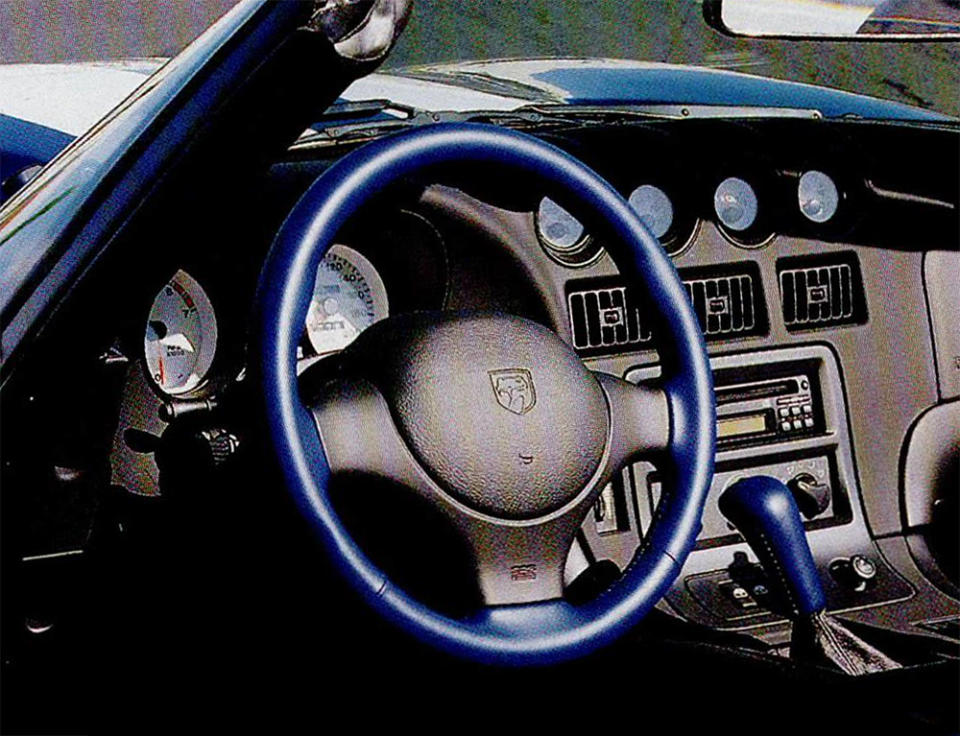
When photographer Allan Rosenberg and I arrived early (no surprise) at Sears Point, we admired some vintage Formula 1 cars on hand for the Wine Country Classic, an event aptly described as "the Monterey Historics of 12 years ago" by one driver. Many of these classic FI cars, I learned, were powered by Cosworth V8s producing about 450 bhp- exactly the same as the Viper.
Now, I'm not saying the Viper is a street-legal Grand Prix car. At 3,320 lb., it's a heckuva lot heavier, but the new Viper Roadster does weigh 50 lb. less than the GTS coupe. And, in my book, no other American car can match the fun of a Viper on the track.
While lapping the upper part of the road course at slow speed to refamiliarize myself with the layout, I was impressed with the docility of the Viper, how easy it was to drive. In no way is this some finicky high-strung Italian steed; it's an American Horse, and it gets the job done in straightforward style by transmitting nearly 500 lb.-ft. of torque to its massive rear tires through a positive clutch. It's just about impossible to stall the Viper, and the shifter is robust and precise.
And the visceral thrills? Simply put, they're dished out in abundance any time you snap open the twin throttles and feed the aluminum V10 all the air and fuel it can devour. On full boil, the Roadster launches with authority and hits 60 mph in only 4.4 seconds. Triple digits arrive in less than 10, and soon the amount of air rushing past your head equals that being expelled out the twin tailpipes.
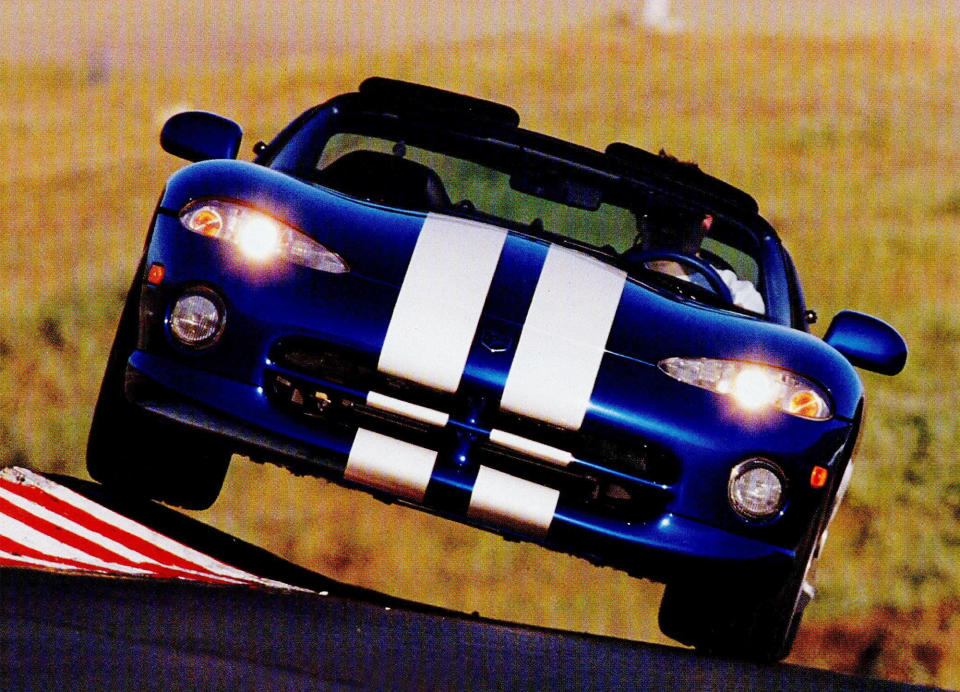
When it's driven like this, the Viper Roadster's spiritual legacy comes to the fore. It's still a throwback to the Sixties and, as such, is very much a driver's car. Which is exactly why I like it. Brake a bit too hard coming into a downhill right-hander, and you'll lock the inside front wheel because there's no ABS.
Apply a bit too much power when exiting a tight corner, and the back end will snap out because the only traction control is at the tip of your right foot.
So is this Viper an exotic? It's hard to say "yes" because the car is crude in comparison to cars like the 911 Turbo S. But the Viper looks great, and its delectable mix of earthmoving torque and monstrous rubber makes it the quickest car built in America.
Anybody wanna go for a ride?-Andrew Bornhop
Caterham Super Seven
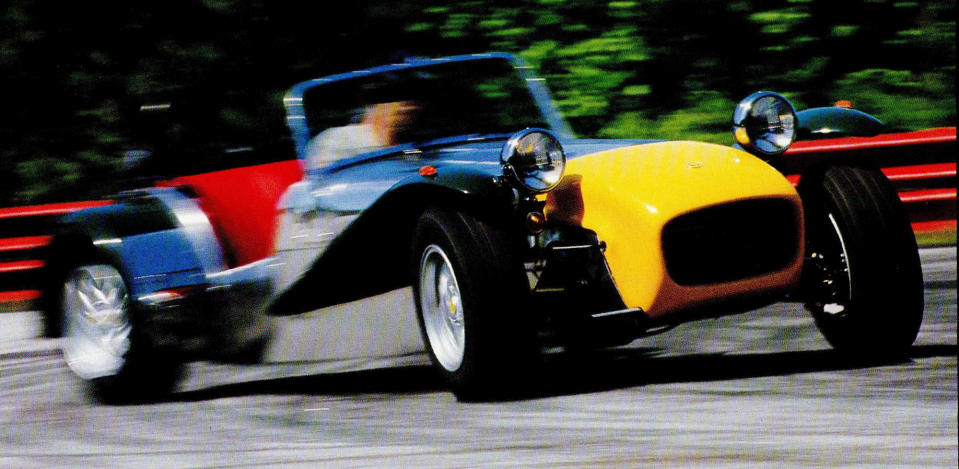
If you look closely enough at photographs of the automobile's greatest originators, you can sense it. It's there behind Ettore Bugatti's imperial stare into the camera lens and some where in the black of Enzo Ferrari's dark sunglasses. In early photos of Colin Chapman, you're aware of it being carefully constructed beneath that tightly pulled cap.
It's the utterly original vision of an automobile. A car stamped with thought and emotion, its every nut and bolt, a steel opinion. Like Monet painting waterlilies, the vision would be repeated over and over again in different colors and perspectives. But it always comes down to the same things: for Bugatti, the perfect, almost cubist artistry of the lithe Type 35. For Ferrari, the flamboyant V12-engined 250 GTO. And then there are the ethereally light machines of Anthony Colin Bruce Chapman.
Chapman was an engineer who would probably laugh at such flowery analysis. He built cars to be light and smart. In fact, the less "car" he could think of between the driver and the road, the better he liked it. How can I make one part do what everybody else needs three for? What is the essential car? Chapman's relentless shaving away of unnecessary fluff was epitomized in the Lotus Seven, a car that escaped his subconscious 40 years ago and has remained in ours ever since.
Well, sort of. In 1973, Chapman decided to drop the Sevenin favor of the Elans and Elites- to the horror of Graham Nearn; of Caterham Cars, a Lotus dealership, which was still doing a brisk business in Seven sales.
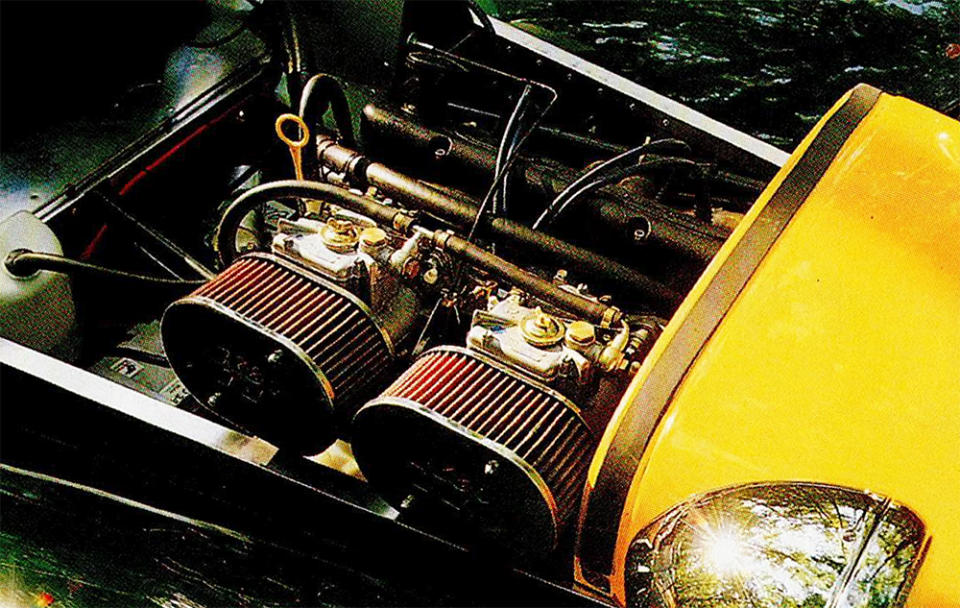
Nearn struck a deal with Chapman to take over production (indeed, chassis fabricator Arch Motors, which had welded Lotus' Sevens, simply continued working, but for Caterham). Around the world since then, there have been perhaps 25 companies that have offered near-Seven replicas, but Caterham's are the real thing.
Our car is a $22,657 40th anniversary Classic SE with a burbly 100-bhp 1.6-liter Ford 4-banger- and a positively spectacular sight in its polished aluminum body panels with green fiberglass fenders and a yellow nose. (This particular color combination originally came about, we're told, when a green nose was damaged just before a press showing and a yellow one was nearby!)
Caterham's U.S. distributor, Frank Boulton of Moto America, Inc., in Marietta, Georgia, reminds us that acquiring a new Seven is a serious commitment. About a month after you order one, you're presented with three boxes of parts, which you can probably assemble in roughly 50 hours (or ask a Moto America-authorized shop to do for you for about $2,500). Either way, a familiarity with Craftsman's best should be considered a prerequisite. Registration procedures vary from state to state (unfortunately, California's is currently a problem), and the paperwork's up to you. But when you're done- well, let's wiggle into its narrow seat for a ride.
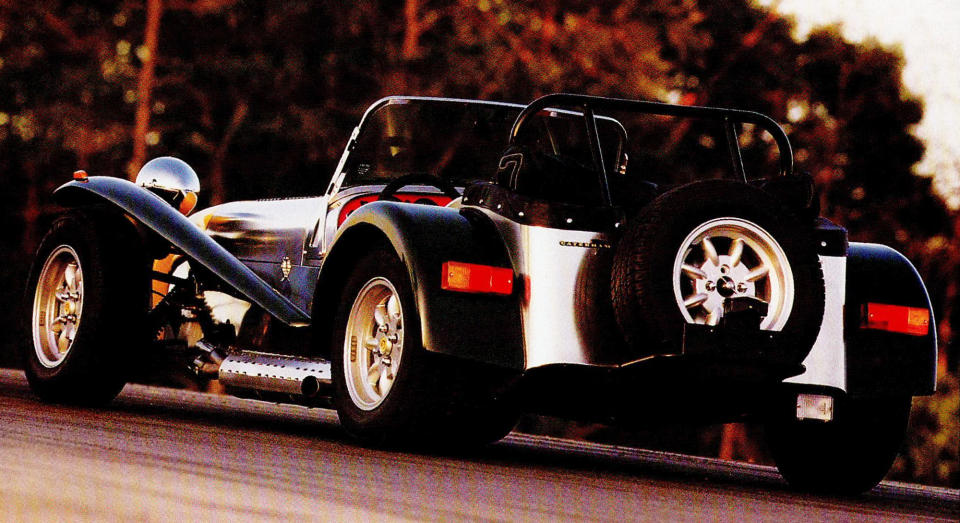
Without the effective side curtains, the wind blasts you at a rate that seems completely out of proportion to your speed. The glass thing in front of you ought to be called a wind magnifier. Ah, but who cares. It's worth the sight of asphalt smearing past your left el bow and hearing that sputtering, clattering, air-grabbing, exhaust-puffing cacophony of an engine just ahead of your feet.
The Seven exposes you to the full force o f the driving experience. After being cooped up in so many sound-deadened, sealed-for-your-protection "modern" cars, a drive in the Seven is like running naked through the hills. Think the Seven left, and left you go. Ditto to the right.
After switching off the engine, a second passes before the ticking exhaust suddenly emits a loud Pop! signaling the Seven's entrance into slumber. You expect a smoke ring to rise in the air. You have to love it.-Kim Reynolds
From the August 1997 issue of Road And Track

 Yahoo Autos
Yahoo Autos 